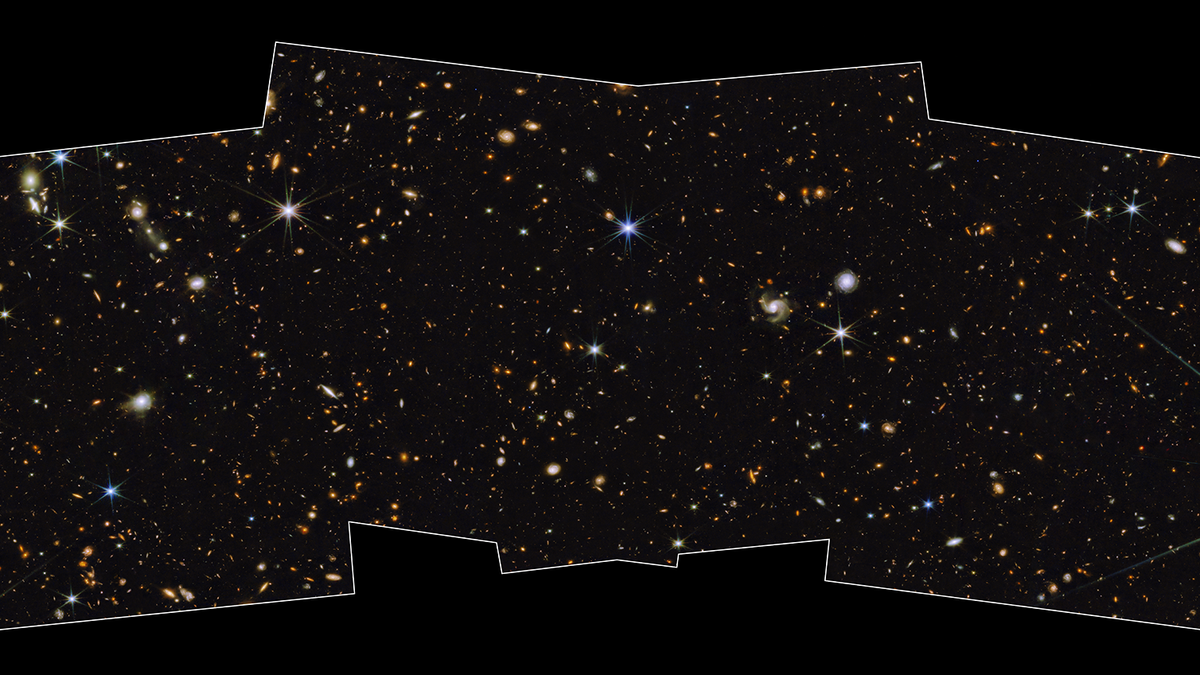James Webb Space Telescope spots faint galaxy 'PEARLS' in stunning new view
By Andrew Jones published about 20 hours ago

The James Webb Space Telescope's view of the North Ecliptic Pole, taken as part of the PEARLS project. (Image credit: SCIENCE: NASA, ESA, CSA, Rolf A. Jansen (ASU), Jake Summers (ASU), Rosalia O'Brien (ASU), Rogier Windhorst (ASU), Aaron Robotham (UWA), Anton M. Koekemoer (STScI), Christopher Willmer (University of Arizona), JWST PEARLS Team. IMAGE PROCESSING: Rolf A. Jansen (ASU), Alyssa Pagan (STScI))
NASA's James Webb Space Telescope continues to amaze, this time with an exquisite image revealing previously unseen galaxies in an area known as the North Ecliptic Pole.
The image is one of the few medium-deep, wide-field images of our cosmos and shows thousands of galaxies across a bewildering range of distances, stretching to the farthest reaches of the universe, while also being studded with stars from our own Milky Way. The new James Webb Space Telescope (Webb or JWST) image, which comes from the Prime Extragalactic Areas for Reionization and Lensing Science (PEARLS) program, also highlights a number of interacting galaxies.
"I was blown away by the first PEARLS images," Rolf Jansen, an astronomer at Arizona State University and a PEARLS co-investigator, said in a statement.
"Little did I know, when I selected this field near the North Ecliptic Pole, that it would yield such a treasure trove of distant galaxies, and that we would get direct clues about the processes by which galaxies assemble and grow," he said. "I can see streams, tails, shells, and halos of stars in their outskirts, the leftovers of their building blocks."
More:
https://www.space.com/james-webb-space-telescope-pearls-image
